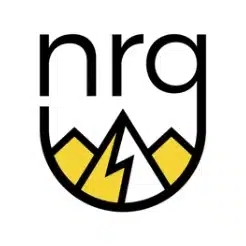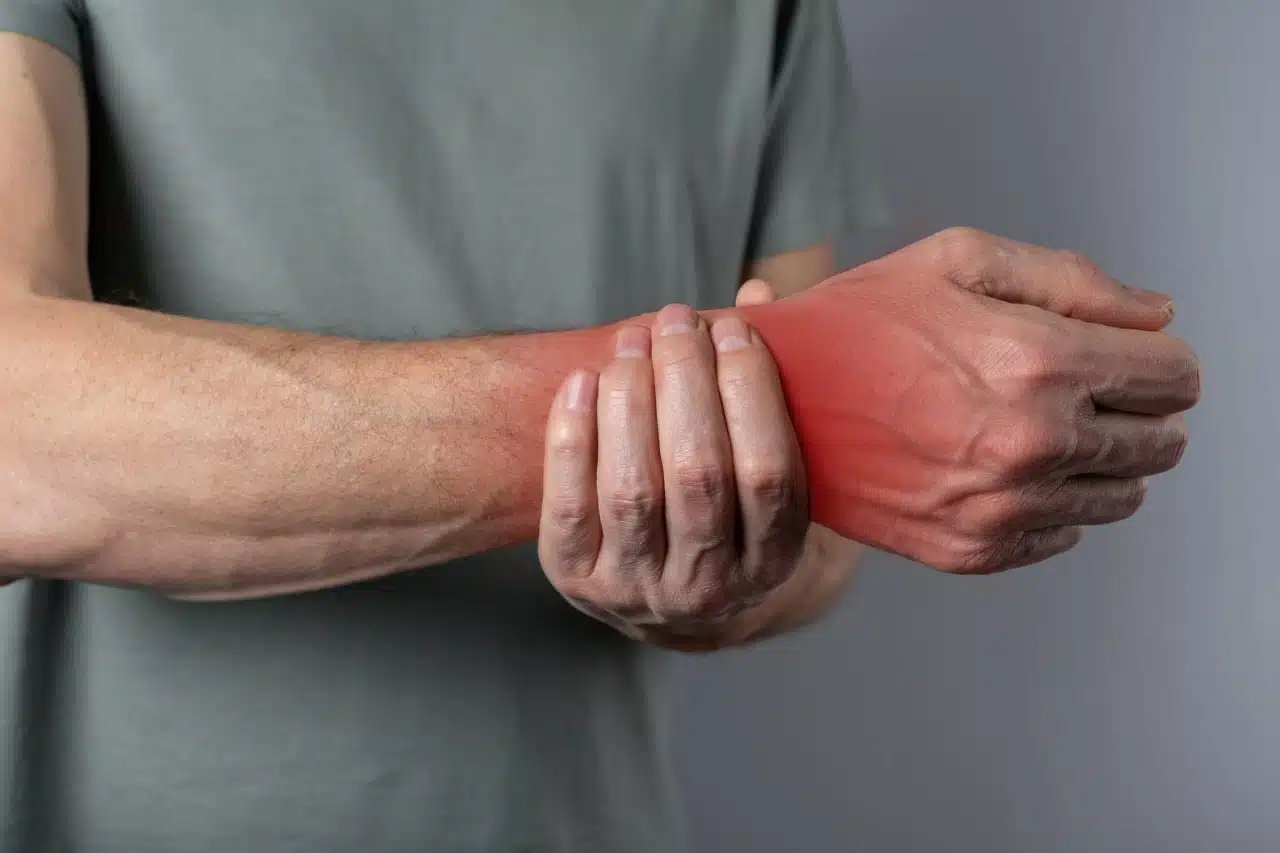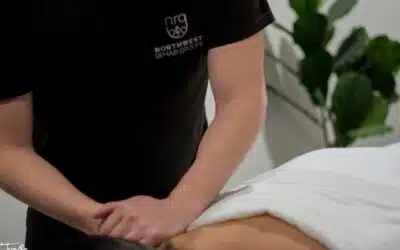Known in medical circles as a common yet often misunderstood condition, Carpal Tunnel Syndrome (CTS) emerges from the shadows of our daily routines, particularly in an era dominated by constant computer use and repetitive hand movements.
Carpal Tunnel Syndrome is more than just a fleeting pain; it is a medical condition characterized by numbness, tingling, and weakness in the hand. Imagine the frustration of a writer unable to type, a musician struggling to play, or a chef hindered in their art – this is the reality for many suffering from CTS. The syndrome originates from pressure on the median nerve, a crucial nerve in the wrist that is responsible for both sensation and movement in the hand.
The causes are manifold, weaving through the fabric of our daily lives. Factors such as repetitive hand movements, especially in incorrect postures, and certain health conditions play a pivotal role. Interestingly, there’s a gender dimension to it as well; women are more likely to develop CTS, a fact attributed to the smaller size of their carpal tunnels compared to men.
In Vancouver, where the spirit of activity is ever-present, from typing away in tech startups to engaging in outdoor adventures, the prevalence of Carpal Tunnel Syndrome is a pressing concern. As we delve deeper into understanding this condition, we uncover the layers of its causes, symptoms, and, most importantly, the avenues for relief and treatment, especially through the lens of chiropractic care.
Definition and Symptoms of Carpal Tunnel Syndrome (CTS)
Carpal Tunnel Syndrome, a term that often flits through conversations in medical clinics and offices alike, is more than just a collection of symptoms; it’s a journey through discomfort and disruption. At its core, CTS is characterized by a compression of the median nerve as it travels through the carpal tunnel, a narrow passageway in the wrist.
The symptoms of CTS are not just medical terms; they are lived experiences that affect every aspect of one’s life. They start subtly, almost whispering, with a tingling or numbness in the thumb, index, and middle fingers. Imagine waking up to a sensation of pins and needles in your hand, a feeling that dissipates as you shake your wrist, only to return with a vengeance as the day progresses.
As the condition evolves, so does the intensity of the symptoms. The tingling turns into a burning sensation, an invisible fire running through the hand. The strength in your grip begins to wane, holding a cup of coffee becomes a task, and typing an email is a challenge. Nighttime brings no relief; the symptoms often worsen, intruding into the realm of sleep and rest.
These symptoms, while common, are not uniform. They vary in intensity and frequency, painting a unique picture for each individual. For some, it’s a minor nuisance; for others, it’s a significant hurdle affecting daily activities and quality of life.
Understanding these symptoms is the first step towards seeking help. More individuals are beginning to recognize these signs early, paving the way for timely intervention. As we explore further, we will delve into the causes of this syndrome, unearthing the roots of this condition that impacts so many lives.
Causes of Carpal Tunnel Syndrome
Unravelling the causes of Carpal Tunnel Syndrome is akin to peeling back the layers of a mystery, each layer revealing a new aspect of this complex condition. At the heart of CTS lies the compression of the median nerve, but what leads to this compression is a tapestry of factors, each interwoven with the others.
One significant thread in this tapestry is repetitive stress. Picture the daily life of a Vancouver office worker or a barista at a bustling café; repetitive motions such as typing or handling a coffee machine become as routine as breathing. However, these repetitive tasks, especially when coupled with improper wrist posture, lay the groundwork for the development of CTS. The median nerve, trapped in these repetitive cycles, becomes irritated and inflamed, much like the frustration of being stuck in a never-ending traffic loop on Granville Street.
Another crucial factor is gender differences. Women are more susceptible to developing CTS, a fact that is not just a statistic but a reflection of the biological differences in wrist anatomy. The carpal tunnel in women is generally smaller, making the median nerve more vulnerable to compression. This is a reminder of how our bodies, in their diverse forms, experience medical conditions differently.
Beyond these, injuries to the wrist that cause swelling, along with conditions like bursitis and tendonitis, can also lead to CTS. Each injury is like a disruption in the city’s rhythm, a sudden incident that changes the course of daily life, leading to unexpected consequences such as CTS.
Understanding these causes is pivotal in both preventing and treating Carpal Tunnel Syndrome. Acknowledging these risk factors is the first step in a journey towards better wrist health and a life free from the constraints of CTS.
Risk Factors
Identifying the risk factors for Carpal Tunnel Syndrome is much like understanding the vulnerabilities in a chain – each link plays a crucial role in either strengthening or weakening the overall structure. In the context of CTS, these risk factors can vary widely, yet each contributes significantly to the likelihood of developing this condition.

The role of posture and repetitive tasks is at the forefront of these risk factors. Imagine a pianist, fingers dancing over the keys day after day, or a graphic designer, perpetually clicking and dragging with a mouse. These repetitive motions, especially when combined with poor ergonomic practices, significantly strain the wrist. It’s not just the repetition but the way these tasks are performed – wrist position, force of hand movements, and lack of adequate breaks – that can turn everyday activities into potential hazards.
Another key risk factor is the individual’s profession and lifestyle. Certain occupations, particularly those that involve extensive use of the hands and wrists, naturally predispose individuals to CTS. This becomes a pertinent issue in a city like Vancouver, with its diverse array of professions from tech to craftsmanship. Moreover, lifestyle choices, such as sports activities or hobbies that exert pressure on the wrists, also play a crucial role.
Additionally, underlying health conditions can increase the risk. Conditions like diabetes, rheumatoid arthritis, and hormonal changes, particularly during pregnancy, can affect the body’s nerves, making them more susceptible to compression.
Awareness of these risk factors is the first step in prevention. For the residents of Vancouver, where active lifestyles and tech-centric professions are common, understanding and mitigating these risks can be a game-changer in maintaining wrist health and preventing Carpal Tunnel Syndrome.
Diagnosis of Carpal Tunnel Syndrome
The journey to diagnosing Carpal Tunnel Syndrome is akin to unravelling a complex puzzle, where each piece brings us closer to a complete understanding of the individual’s condition. In Vancouver’s diverse healthcare landscape, the diagnostic process for CTS is both a science and an art, requiring a blend of clinical acumen and technological assistance.
The first step in this diagnostic odyssey often begins with a detailed medical history and a physical examination. Picture a conversation in a doctor’s office, where patients describe their symptoms, daily activities, and any prior injuries. This dialogue is crucial, as it sheds light on potential causes and patterns that may point towards CTS.
Following this, a series of physical examinations are conducted. One common test is the Tinel’s sign, where tapping over the median nerve at the wrist elicits tingling in the fingers, akin to the sensation of a musical note resonating through the air. Another is Phalen’s test, where the patient holds their wrists in a flexed position for a minute. If numbness or tingling occurs, it’s like a signal flare, indicating the presence of CTS.
In some cases, further technological investigations are warranted. These may include nerve conduction studies, which measure the speed and strength of electrical impulses as they travel through the median nerve. This test is not unlike a traffic analysis, where the flow and speed of vehicles are monitored to identify any disruptions.
Electromyography (EMG) is another tool used to evaluate the electrical activity in muscles. It helps in distinguishing CTS from other conditions that may cause similar symptoms, acting as a fine sieve and separating grains of different sizes and types.
The diagnostic process reflects a commitment to precision and patient-centered care. By thoroughly understanding each patient’s unique situation, healthcare providers can diagnose CTS accurately and tailor the treatment to the individual’s specific needs.
Treatment Options for Carpal Tunnel Syndrome
Navigating the treatment landscape for Carpal Tunnel Syndrome in Vancouver is like exploring a garden with a variety of paths, each leading to a different form of relief and healing. The treatment options for CTS are diverse, catering to patients’ varied needs and conditions.
One of the initial treatments often recommended is the use of splints. These are not just simple supports; think of them as the braces of the hand, providing stability and rest to the wrist, especially during nighttime. Splints help alleviate the pressure on the median nerve by keeping the wrist in a neutral position, offering a respite to the inflamed area.
Medication is another path often taken. This includes the use of anti-inflammatory drugs, which can be seen as fire extinguishers, dampening the flames of inflammation and providing relief. In more severe cases, corticosteroid injections are considered, acting as potent agents to reduce swelling and pain.
However, the field of treatment is not limited to splints and medication. Massage therapy plays a crucial role in the comprehensive treatment of CTS. Picture a skilled therapist, their hands working through the muscles and tissues of the wrist, easing tension and improving circulation. This approach not only addresses the symptoms but also contributes to overall wrist health.
However, the cornerstone of CTS treatment in Vancouver lies in chiropractic care. Chiropractors employ a range of techniques, from manipulation and mobilization to stretching and strengthening exercises. Each technique is like a tool in a toolbox, chosen and applied based on the patient’s specific needs. Manipulation and mobilization techniques aim to improve the alignment and motion of the wrist and hand while stretching and strengthening exercises focus on building resilience in the wrist muscles.
With its hands-on approach, chiropractic care offers relief from the symptoms and works towards addressing the root cause of CTS. This proactive approach is akin to cultivating a healthy garden, where each treatment is a nurturing element that contributes to the overall well-being of the wrist.
Preventative Measures
The adage “prevention is better than cure” holds a profound truth when it comes to Carpal Tunnel Syndrome, especially in a dynamic city like Vancouver, where daily life demands much from our hands and wrists. Adopting preventative measures can be likened to building a fortress, safeguarding against the onset of CTS.
One of the cornerstones of this fortress is lifestyle and ergonomic advice. In this context, Ergonomics isn’t just a buzzword; it’s a critical practice. Visualize an office space where desks, chairs, and computer equipment are arranged not just for efficiency but for physical well-being. Ergonomic keyboards, supportive wrist rests, and chairs that encourage proper posture form the bulwarks against CTS.
Incorporating regular breaks into one’s routine is also pivotal. Like a musician pausing between symphonies, these breaks allow the hands and wrists to rest, reducing the cumulative impact of repetitive stress. Simple stretches and exercises can be integrated into these pauses, serving as a muscle and tendon tune-up.
The role of awareness cannot be overstated. Being conscious of early symptoms and adjusting activities accordingly is akin to catching and addressing a minor flaw before it compromises the integrity of a structure. This awareness extends to recognizing when to seek professional advice, especially for individuals in high-risk occupations or those with early signs of hand and wrist strain.
Lastly, the emphasis on overall health is crucial. General physical fitness and maintaining a healthy weight contribute to reducing the risk of CTS. This comprehensive approach is like nurturing the roots of a tree, ensuring its overall strength and ability to withstand storms.
In Vancouver, with its blend of urban and outdoor lifestyles, these preventative strategies are not just recommendations but essential practices. They empower individuals to take charge of their hand and wrist health, preventing the onset of Carpal Tunnel Syndrome and ensuring a life full of activity and freedom from pain.
Recovery and Management
Embarking on the road to recovery from Carpal Tunnel Syndrome in Vancouver is akin to navigating the city’s diverse landscapes – it requires patience, persistence, and the right approach. Recovery and long-term management of CTS are not just about treatment but about adapting to a lifestyle that supports wrist health.
The recovery period can vary significantly from person to person, much like the diverse paths found in Stanley Park, each leading to a different vista. For some, relief comes swiftly, especially with early intervention, while for others, especially in more severe cases, the journey may be longer and more complex. Setting realistic expectations and understanding that recovery is often a gradual process is crucial.
Adherence to prescribed treatments, whether splints, medications, or physical therapy, is essential during this period. Each element of the treatment plan is a stepping stone toward regaining wrist health. It’s important to regularly consult with healthcare providers, ensuring the treatment is effective and adjusting as necessary.
Long-term management strategies are equally important. This involves not just periodic check-ins with healthcare professionals but also integrating wrist-friendly practices into daily routines. For instance, continuing with ergonomic practices at work and home, maintaining a routine of wrist exercises, and being mindful of wrist posture during activities are all crucial.
In addition, being vigilant about any recurring symptoms and addressing them promptly is vital. Just as a gardener keeps an eye out for weeds to prevent them from overtaking a garden, individuals who have experienced CTS must be proactive in monitoring their symptoms.
In the vibrant city of Vancouver, where people are constantly engaged in myriad activities, understanding and implementing these recovery and management strategies is key. It ensures that individuals not only overcome CTS but also lead a lifestyle that minimizes the risk of its recurrence, allowing them to enjoy everything the city has to offer without being hindered by wrist pain.
Conclusion
As our exploration of Carpal Tunnel Syndrome comes to a close, it’s essential to reflect on the journey we’ve taken. From understanding the nuances of CTS to delving into its various treatment options, one aspect stands out prominently: the significant role of chiropractic care in managing this condition.
Chiropractic care, with its comprehensive approach, does not merely address the symptoms of CTS but seeks to target its root cause. This form of treatment, practiced by skilled chiropractors in Vancouver, involves a combination of wrist manipulation, mobilization, and exercises, all tailored to the individual’s specific condition. It’s akin to a craftsman meticulously repairing a delicate timepiece, ensuring every component functions harmoniously.
The benefits of chiropractic care for CTS extend beyond pain relief. It empowers individuals to regain control over their wrist health, enhancing their overall quality of life. Patients often report not only a reduction in pain and discomfort but also an improvement in wrist function and strength. This is particularly significant in a city teeming with artists, tech professionals, and outdoor enthusiasts, for whom hand and wrist health is paramount.
Moreover, chiropractic care underscores the importance of a proactive approach to health. It encourages a lifestyle that incorporates proper ergonomics, regular exercise, and awareness of body mechanics, which are essential in preventing the recurrence of CTS.
In conclusion, while Carpal Tunnel Syndrome presents a challenge to many in Vancouver, the availability and effectiveness of chiropractic care offer a beacon of hope. It represents a pathway to not just recovery but also to a lifestyle that prioritizes and nurtures one’s emotional and physical fitness. As we navigate through our busy lives, let us remember the power of informed choices, proactive health measures, and the invaluable support of dedicated healthcare professionals in our journey toward health and wellness.
Reference
Understanding of CTS
- Mayo Clinic: Offers a detailed overview, including prevention tips and ideal workstation posture to lessen stress on hands and wrists, useful for an introductory or background section on CTS.
Symptoms and Diagnosis
- Cleveland Clinic: Provides comprehensive information on symptoms, causes, complications, and diagnosis methods, suitable for sections discussing the identification and initial assessment of CTS.
- Johns Hopkins Medicine: Explains symptoms, diagnosis, and treatments, including the perspective of a hand and upper extremities surgeon, beneficial for a paragraph on diagnosis complexity and treatment options.
Risk Factors and Causes
- NIAMS: Discusses who gets CTS, its symptoms, and causes, ideal for a section on risk factors and environmental or genetic predispositions.
Treatment Approaches
- StatPearls – NCBI Bookshelf: Describes conservative therapy, electrodiagnostic testing, and surgical interventions, perfect for a detailed treatment section.
- PubMed: Summarizes recent advances in understanding and managing CTS, including conservative management and surgery, useful for paragraphs on novel treatments and management strategies.






0 Comments